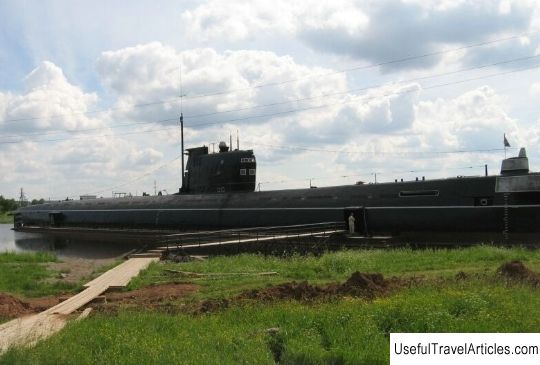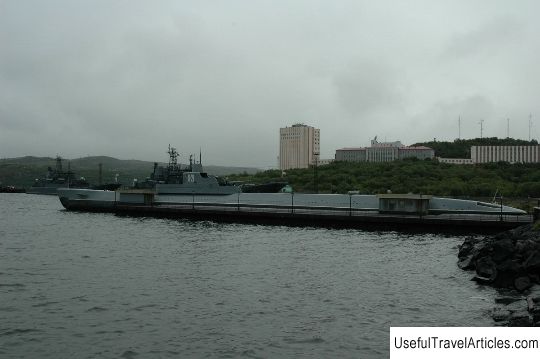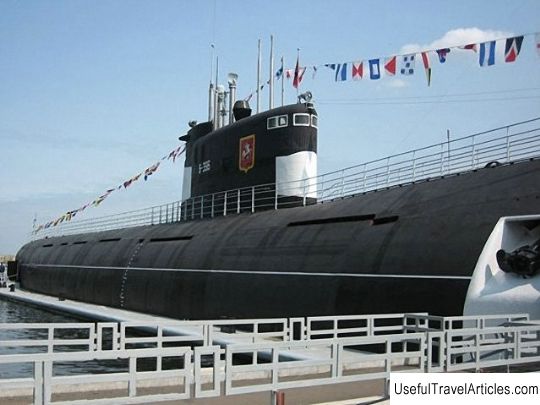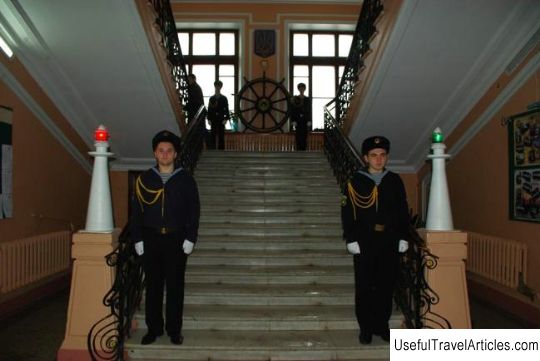Museum Submarine B-440 in Vytegra description and photos - Russia - North-West: Vologda Oblast
Rating: 8,6/10 (578 votes) 
Museum " Submarine B-440 " in Vytegra description and photo - Russia - North-West: Vologda region. Detailed information about the attraction. Description, photos and a map showing the nearest significant objects. Photo and descriptionThe unique museum "Submarine B-440" is located in the town of Vytegra against the backdrop of the picturesque shores of the famous Onega Lake. This small town is considered the birthplace of Mikhail Alekseevich Rudnitsky, a famous designer of diesel submarines, as well as five more admirals. The museum exposition is as close as possible to the environment in which submariners find themselves during distant sea voyages. Experienced guides will show you all the compartments and tell you not only about the purpose of the submarine, but also about its design. As for the historical information, it is known that the submarine "B-440" was built in the city of Leningrad at the Novo-Admiralty plant in 1969. A year later, a flag was raised on the boat and the boat was launched. For thirty-one years, the B-440 carried out its important combat mission. For about 19 years, the boat was part of a squadron of submarines belonging to the Northern Fleet. Since 1992, the submarine has performed its characteristic tasks related to the search for combat vehicles and ships, participated in exercises, reconnaissance, carried out patrol services and much more. B-440 made a considerable number of long-distance ocean trips. In 1977, by order of the commander-in-chief of the Northern Fleet, the crew of the boat was recognized as excellent for successes in daily work. In the period from 1970 to 1998, the submarine served in the Northern and Baltic fleets, and in the summer of 2003 was transferred as state property to the Vologda region. The museum was opened on December 10, 2005. The first museum compartment is a bow torpedo compartment. Here you can find torpedo tubes, a torpedo loading device, numerous control devices for horizontal bow rudders and torpedo firing. The torpedo is about 8 meters long and weighs two tons, which is especially impressive. In the same compartment, there are three tiers of berths intended for personnel. According to the submariners, this particular compartment is the most comfortable, despite the fact that it contains torpedoes. In addition, you can get out of it in case of an accident. The second compartment is considered a residential battery. Here are the officers 'cabins, the officers' wardroom and the hydroacoustics cabin. There is always a highly qualified medical officer on board. There is a rechargeable nose battery under the floor of the second compartment, which consists of two groups of 12 elements. Care for the batteries was especially thorough, because the life of the crew depended on it. The third compartment was the central post, which was considered the heart of the B-440 boat. Numerous instruments of the compartment are intended for using weapons, determining the location of the submarine, communicating the post with the rest of the compartments of the boat, and also for controlling the submarine. Here are the navigator's cabin, bow latrine and torpedo firing command post. In the hold there is a freezer and a food warehouse. The fourth compartment is a living battery compartment, in which the midshipmen's wardroom, galley, double cabin, mechanics' cabin and a communications cabin are located. & Nbsp; The galley has very little interior space. Food for the ship's crew was cooked in large pots. In addition, bread was baked in the oven. The wheelhouse was used to connect the coastal command with the B-440. There are several battery pits under the deck floor. The fifth compartment housed diesel engines, of which there were three on the boat. But the sixth compartment was electromotive; it housed three main electric motors, as well as a control panel for propulsion electric motors and economy drive motors. In the seventh compartment of the submarine there are four torpedo tubes, a spare gyrocompass, a tube, and a fire control device. The seventh compartment carried the most important purpose - emergency control of vertical and horizontal rudders. In the same compartment, the sailors spent their free time watching films, which were the connecting component of their underwater world with the abandoned surface.       We also recommend reading Cathedral of the Iberian Icon of the Mother of God of the Iberian Iberian Monastery description and photos - Russia - North-West: Valdai Topic: Museum Submarine B-440 in Vytegra description and photos - Russia - North-West: Vologda Oblast. |




